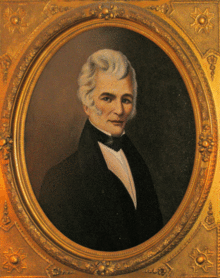William Carroll | |
|---|---|
 | |
| 5th Governor of Tennessee | |
| In office October 1, 1821 – October 1, 1827 | |
| Preceded by | Joseph McMinn |
| Succeeded by | Sam Houston |
| In office October 1, 1829 – October 12, 1835 | |
| Preceded by | William Hall |
| Succeeded by | Newton Cannon |
| Personal details | |
| Born | March 3, 1788 Pittsburgh, Pennsylvania, U.S. |
| Died | March 22, 1844 (aged 56) Nashville, Tennessee, U.S. |
| Resting place | Nashville City Cemetery |
| Political party | Democratic-Republican, later Democratic |
| Spouse | Cecelia Bradford |
| Relations | William Henry Carroll (son) |
| Profession | Businessman |
| Military service | |
| Branch/service | Tennessee militia |
| Years of service | 1812–1815 |
| Rank | Major General |
| Battles/wars | Creek War • Talladega (1813) • Emuckfaw (1814) • Enotachopo (1814) • Horseshoe Bend (1814) War of 1812 • New Orleans (1815) |
William Carroll (March 3, 1788 – March 22, 1844) was an American politician who served as the fifth Governor of Tennessee twice, from 1821 to 1827 and again from 1829 to 1835. He held the office longer than any other person, including the state's only other six-term governor, John Sevier.[1] He is considered one of the state's most popular political figures of the 1820s, and is credited with initiating numerous legal and tax reforms.[2]
Carroll joined the Tennessee militia as a captain in 1812, and quickly rose through the ranks. He participated in several engagements during the Creek War, and, as a major-general, commanded Andrew Jackson's center at the Battle of New Orleans in 1815.[3]
- ^ "William Carroll". The Tennessee Encyclopedia of History and Culture. Retrieved September 19, 2012.
- ^ Phillip Langsdon, Tennessee: A Political History (Franklin, Tenn.: Hillsboro Press, 2000), pp. 59–63, 78–80, 91–93.
- ^ Emma Carroll Tucker, "Governor William Carroll," Tennessee Historical Society Quarterly, Vol. 2, No. 3, pp. 388–396.